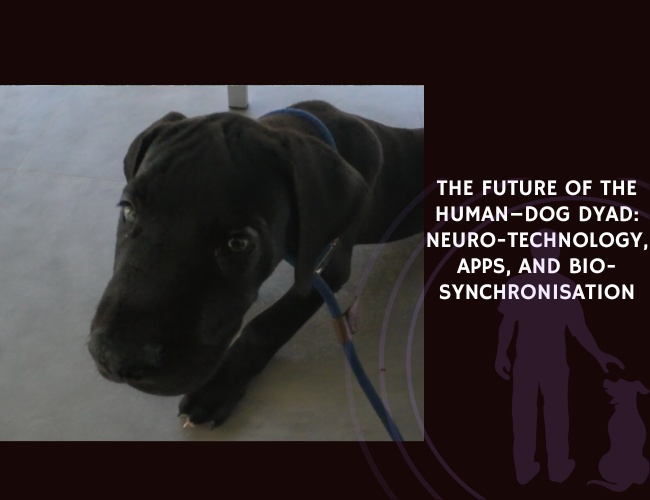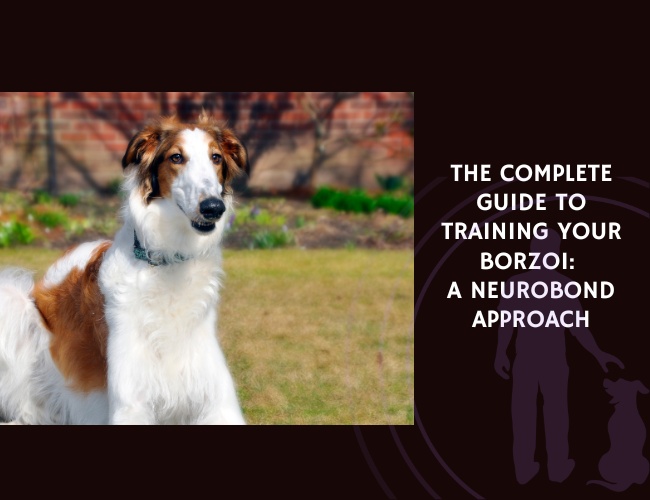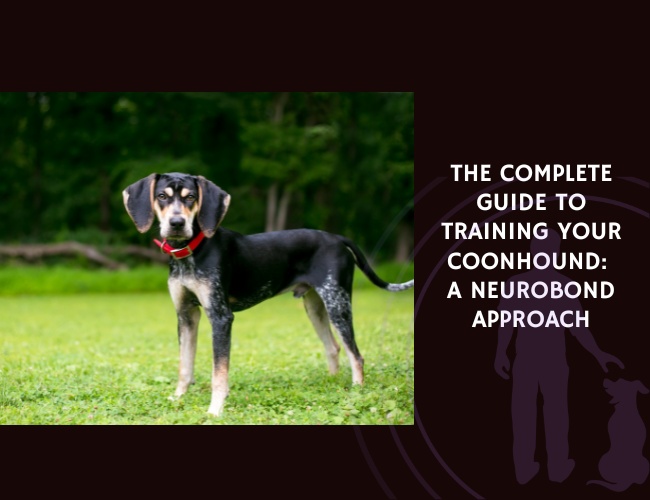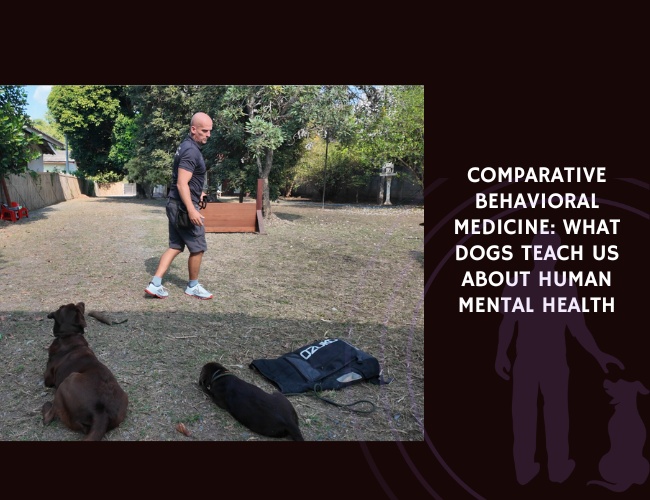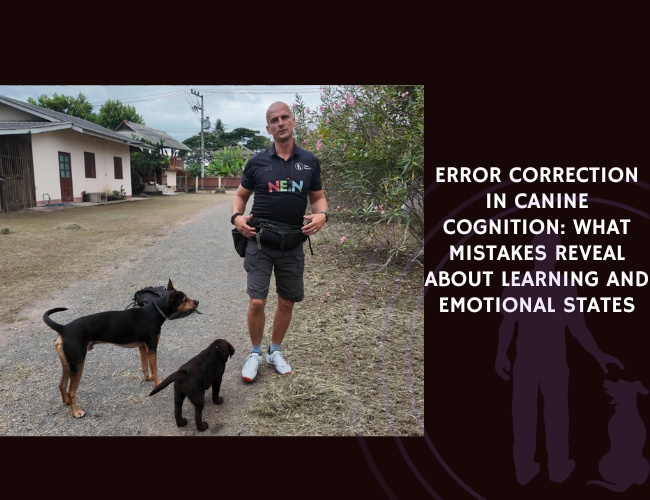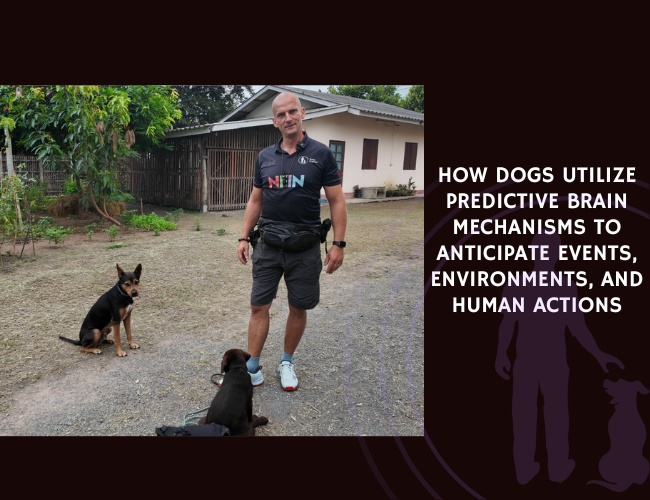Have you ever wondered why your furry friend can remember where they buried their favorite toy weeks ago, yet seems to forget the “stay” command the moment a squirrel appears? The answer lies in one of the most fascinating aspects of canine cognition: working memory. This invisible mental workspace shapes everything from your dog’s training success to their problem-solving abilities, and understanding it can transform your relationship with your four-legged companion.
Working memory isn’t just about remembering things—it’s your dog’s mental notepad, constantly updating and processing information to help them navigate their world. Let us guide you through this remarkable cognitive system that makes your dog uniquely capable of learning, adapting, and bonding with you in ways that continue to amaze scientists and dog lovers alike. 🧡
What Is Working Memory in Dogs?
Understanding Your Dog’s Mental Workspace
Think of working memory as your dog’s mental juggling act—it’s their ability to hold and manipulate information in real-time while performing tasks. Unlike long-term memory (where your pup stores the location of their favorite park), working memory is what allows them to follow a series of commands, navigate obstacles, or figure out how to reach that treat you’ve hidden under three cups.
The cognitive control center operates much like a computer’s RAM, temporarily storing and processing information your dog needs right now. When you ask your dog to “sit, wait, then come,” their working memory holds each part of this sequence while executing it. This remarkable system involves multiple brain regions working in concert, particularly the prefrontal cortex—yes, dogs have one too!
Why this matters for you: Understanding your dog’s working memory capacity helps explain why some training sessions go smoothly while others feel like you’re speaking different languages. It’s not stubbornness—it’s cognitive load, and recognizing this difference can transform your training approach.
Breed Differences in Working Memory
How Your Dog’s Heritage Shapes Their Mental Capacity
Did you know that your dog’s breed history plays a significant role in their working memory capabilities? Recent research reveals fascinating differences between breeds, and these variations aren’t just interesting trivia—they directly impact how you should approach training and enrichment activities with your specific furry friend.
Working breeds excel at complex tasks. Studies comparing actively working dogs (like search-and-rescue heroes and police K9s) with pet dogs reveal striking differences. Dogs from working breed lineages—whether they’re actively working or lounging on your couch—consistently outperform non-working breeds in tasks requiring sustained attention and information processing. This isn’t about intelligence; it’s about specialized cognitive architecture developed over centuries of selective breeding.
Herding breeds showcase exceptional sequential memory. Border Collies, Australian Shepherds, and other herding breeds demonstrate remarkable abilities to remember and execute complex command sequences. Their ancestors needed to track multiple sheep, remember terrain features, and respond to subtle handler cues—all simultaneously. This heritage translates into superior working memory capacity that you might notice when your Border Collie seems to anticipate your next move during agility training.
Companion breeds have different strengths. Before you worry that your Cavalier King Charles Spaniel might struggle with working memory tasks, remember that these breeds were selected for different cognitive strengths. They often excel at reading human emotional cues and maintaining focus on their handler—skills that require their own sophisticated cognitive processing. Your companion breed’s working memory might be optimized for social cognition rather than task sequences.
This breed-specific variation means you should tailor your expectations and training methods. A German Shepherd might thrive with complex, multi-step training exercises, while a Pug might perform better with shorter, simpler sequences repeated more frequently. Neither approach is wrong—they’re just different paths to the same destination. 🐾
The Science of Cognitive Load
When Your Dog’s Mental Workspace Gets Overwhelmed
Have you ever noticed your usually brilliant dog suddenly unable to perform a simple command they’ve known for years? You’re witnessing cognitive overload in action, and understanding this phenomenon can revolutionize how you train and interact with your canine companion.
Environmental distractions tax working memory significantly. Groundbreaking research with working dogs reveals that acoustic distraction at just 85 decibels—about the volume of city traffic—can dramatically impair both physical and cognitive performance. Even more concerning, repeated exposure to uncontrolled distractions doesn’t help dogs adapt; instead, nine out of twelve dogs in studies became increasingly sensitized, eventually refusing to participate in tasks altogether.
The flicker effect disrupts focus. Strobe lighting at frequencies between 5 and 15 Hz (similar to emergency vehicle lights) significantly reduces dogs’ ability to complete both mental and physical tasks. Interestingly, steady colored lights don’t cause the same disruption, suggesting it’s the flickering that overwhelms the working memory system. This explains why your dog might suddenly “forget” their training when a police car passes with lights flashing.
Interference from previous learning creates conflicts. Your dog’s working memory constantly battles interference from previously learned information. When you change a command or routine, their brain must suppress the old pattern while implementing the new one—a cognitively demanding process that explains why retraining is often harder than initial training. This interference control requires significant working memory resources, leaving less capacity for learning new information.
Managing Cognitive Load in Daily Life
Understanding cognitive load empowers you to set your dog up for success. Here’s how this knowledge translates into practical strategies:
Start training in low-distraction environments. Your living room provides the perfect low-load setting for introducing new commands. Once your dog masters a skill here, gradually increase environmental complexity—first your backyard, then a quiet park, and eventually busier locations.
Break complex behaviors into smaller chunks. Instead of teaching “go to your bed, lie down, and stay” as one behavior, teach each component separately. Only combine them once each piece is solid in your dog’s long-term memory, reducing the working memory load during execution.
Recognize signs of overload:
- Suddenly “forgetting” well-known commands
- Increased sniffing or looking away (displacement behaviors)
- Slower response times to cues
- Offering previously learned behaviors instead of the requested one
When you notice these signs, it’s time to reduce difficulty, not push harder. Your dog isn’t being stubborn—their mental workspace is simply full.
Working Memory and Learning Efficiency
The Foundation of Every New Skill
The relationship between working memory and learning forms the cornerstone of your dog’s ability to acquire new skills, adapt to changes, and thrive in your shared life. This connection influences everything from basic obedience to complex problem-solving, and understanding it transforms you from a dog owner into a true canine educator.
Spatial working memory drives navigation learning. When your dog learns the layout of your home or memorizes the route to the dog park, they’re engaging spatial working memory. Research shows dogs perform significantly worse when prevented from using orientation strategies, highlighting how working memory and physical movement intertwine. This explains why movement-based training (like lure-reward methods) often produces faster learning than stationary instruction.
Experience and training create lasting improvements. Life experience doesn’t just teach specific skills—it actually enhances working memory capacity. Dogs with rich, varied experiences develop more robust cognitive systems, creating a positive feedback loop where better working memory enables more complex learning, which further strengthens working memory. This neuroplasticity continues throughout your dog’s life, meaning it’s never too late to start cognitive enrichment.
The familiarity factor influences performance. Studies reveal that both working dogs and pets perform better with familiar handlers, suggesting that emotional comfort frees up working memory resources for task completion. This means your bond with your dog directly impacts their cognitive performance—the trust you build together literally helps them think better.
Optimizing Learning Through Working Memory
Transform your training sessions with these working memory-informed strategies:
Use consistent cue patterns initially. While you’ll eventually want your dog to respond to cues in any order, initial learning benefits from predictable sequences. This reduces working memory load and accelerates acquisition.
Leverage primacy and recency effects. Dogs, like humans, best remember the first and last things in a sequence. Place the most important elements of training at the beginning or end of sessions for optimal retention.
Build cognitive stamina gradually. Just as physical exercise builds muscle, cognitive exercise builds working memory capacity. Start with 5-minute focused training sessions and gradually extend them as your dog’s mental stamina improves.

The Impulse Control Connection
How Working Memory Helps Your Dog Think Before Acting
That moment when your dog pauses before chasing a squirrel, looks at you despite the doorbell ringing, or waits patiently while you prepare their dinner—these victories of impulse control are working memory in action. The ability to override immediate impulses requires holding alternative behaviors in mind while suppressing automatic responses, making working memory the unsung hero of good behavior.
Working memory acts as the brake pedal. When your dog sees something exciting, their working memory must maintain the “leave it” command while simultaneously suppressing the chase instinct. Dogs with stronger working memory consistently demonstrate better impulse control, explaining why some pups seem naturally more patient than others. This cognitive brake system develops with practice, which is why consistent training yields cumulative benefits beyond just the specific behaviors you’re teaching.
High-stakes situations demand more resources. Police and military working dogs face extreme tests of impulse control—remaining calm during gunfire, ignoring fleeing suspects when commanded, or searching methodically despite chaos. Research reveals these dogs don’t just have better training; they’ve developed exceptional working memory capacity through progressive exposure to controlled challenges. Your pet might not need military-level impulse control, but the same principles apply to everyday situations.
Emotional states affect cognitive control. When your dog is stressed, excited, or fearful, their working memory capacity effectively shrinks. This explains why your usually well-behaved dog might completely lose impulse control at the vet or during thunderstorms. The emotional processing centers of the brain compete for the same cognitive resources, leaving less available for behavioral control.
Building Better Impulse Control Through Working Memory
Strengthen your dog’s self-control with these targeted exercises:
The “Wait” ladder progression: Start with one-second waits before meals, gradually building to 30 seconds. Then add distance, distractions, and different rewards. Each step strengthens working memory’s ability to maintain behavioral inhibition.
Switch games build flexibility: Teach your dog to alternate between incompatible behaviors (sit/down, speak/quiet). This forces working memory to actively suppress one behavior while activating another, building cognitive flexibility alongside impulse control.
Real-world practice scenarios: Set up controlled temptations—a treat on the coffee table, an open door, a toy just out of reach. Practice “leave it” in these contexts, gradually increasing difficulty as your dog’s working memory strengthens. Remember, every successful resistance builds neural pathways that make future impulse control easier. 🧡
Environmental Enrichment and Cognitive Enhancement
Creating a Brain-Boosting Environment for Your Dog
Your home environment profoundly influences your dog’s cognitive development, particularly their working memory capacity. Just as children benefit from stimulating environments that encourage exploration and learning, your dog’s surroundings can either enhance or limit their cognitive potential. The good news? Simple environmental modifications can significantly boost your furry friend’s mental capabilities.
Sensory variety builds cognitive reserve. Research across multiple species demonstrates that varied sensory experiences create cognitive reserve—essentially, extra brain capacity that protects against decline and enhances current performance. For your dog, this means exposure to different textures, sounds, smells, and visual stimuli actually rewires neural circuits, strengthening working memory networks. A walk through different neighborhoods provides more cognitive benefit than the same route every day.
Novel challenges promote neuroplasticity. Your dog’s brain remains plastic throughout life, capable of forming new neural connections in response to environmental demands. Introducing novel puzzles, changing toy locations, or rearranging furniture occasionally forces your dog to update their mental maps, exercising working memory in natural, engaging ways. This experience-dependent neuroplasticity means every new challenge literally reshapes your dog’s brain.
Social enrichment enhances cognitive flexibility. Interactions with other dogs and humans provide unique cognitive challenges that can’t be replicated through solo activities. Reading social cues, predicting others’ behavior, and navigating group dynamics all demand sophisticated working memory processing. Regular, positive social experiences don’t just make your dog happier—they make them cognitively stronger.
Practical Enrichment Strategies
Transform your space into a cognitive gymnasium with these evidence-based approaches:
Rotate enrichment activities weekly. Instead of leaving all toys available constantly, create a rotation system. This maintains novelty and forces working memory to adapt to changing resources. Hide treats in different locations each day, encouraging your dog to update their mental search patterns.
Create puzzle feeding opportunities. Scatter feeding, puzzle bowls, and hidden meals transform mealtime into working memory workouts. Start simple and gradually increase complexity as your dog masters each level. This isn’t just mental exercise—it mimics natural foraging behaviors that dogs’ brains are evolutionarily prepared to perform.
Design exploration zones. Dedicate a corner of your yard or home to sensory exploration. Add different textures (carpet samples, artificial grass, smooth tiles), safe scents (herb plants, diluted essential oils on cloths), and interactive elements (bells, crinkly materials). Change elements monthly to maintain novelty while allowing enough time for thorough investigation.
Focused. Fragile. Transformative.
Working memory shapes learning. Your dog’s ability to juggle information in real time explains why they can follow sequences yet falter under distraction. This mental workspace functions like RAM in a computer, holding commands briefly before they fade, and it defines both their training capacity and their limits.
Breed heritage influences capacity. Generations of selective breeding shaped different strengths: herding dogs excel at multi-step tasks, working breeds sustain focus under pressure, while companion breeds specialize in emotional attunement. Recognizing these cognitive variations allows training to align with each dog’s natural abilities.
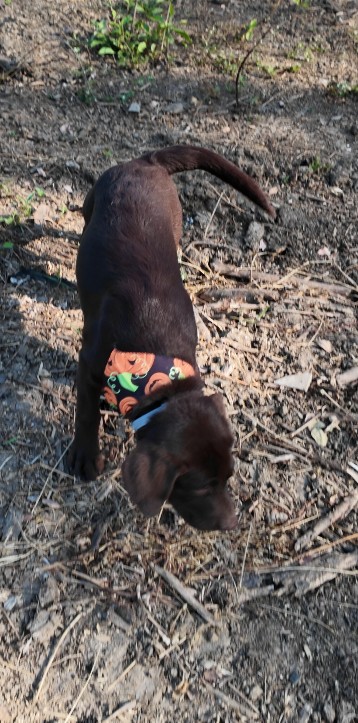

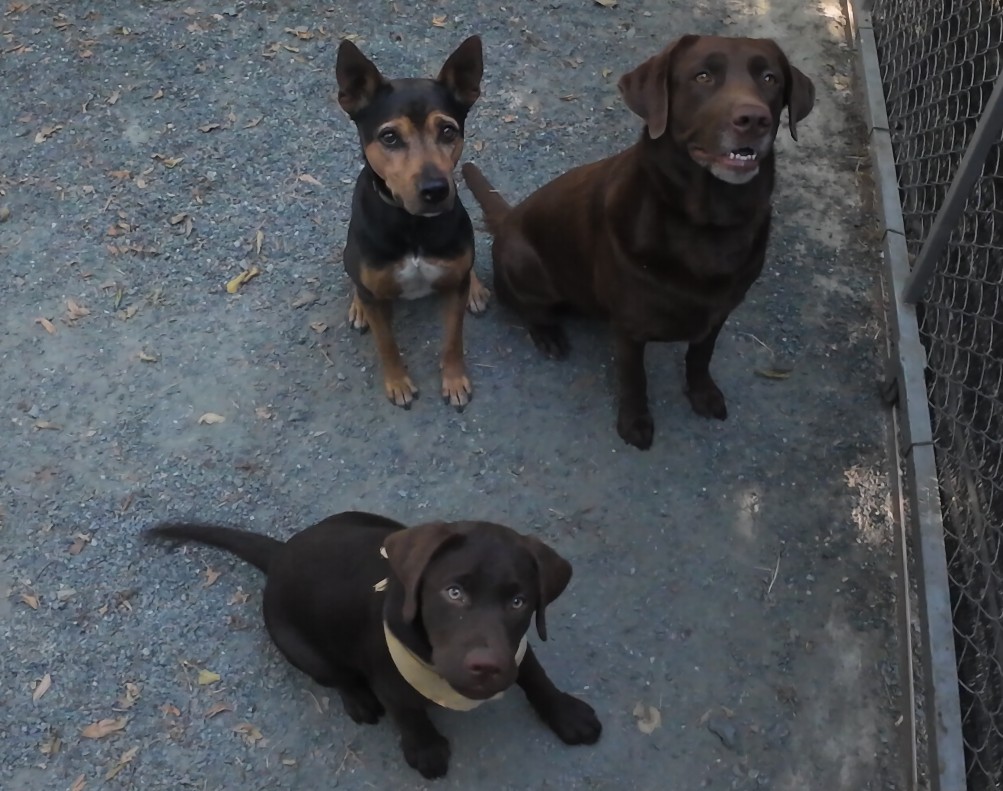
Overload disrupts performance. When too much information floods their mental notepad, even well-learned commands collapse into confusion. It isn’t stubbornness but cognitive strain, reminding us that progress in training requires balance—clarity, timing, and patience unlock their true potential.
Working Memory Across Life Stages
Supporting Cognitive Development from Puppyhood to Senior Years
Your dog’s working memory journey begins before their eyes even open and continues evolving throughout their lifetime. Understanding how this cognitive system develops and changes helps you provide age-appropriate support that maximizes your companion’s potential at every life stage.
Puppy foundations (8 weeks – 6 months). During this critical period, your puppy’s working memory system is rapidly developing but has limited capacity. Young puppies can typically hold only one or two pieces of information simultaneously, explaining why complex commands often result in adorable but confused head tilts. Short, frequent training sessions of 2-3 minutes capitalize on their brief attention spans while building foundational neural pathways. Focus on single-step commands and immediate rewards—your puppy’s working memory can’t yet bridge long gaps between action and consequence.
Adolescent challenges (6 months – 2 years). Just when you thought training was progressing smoothly, adolescence hits. Your dog’s working memory capacity is expanding, but hormonal changes and neural reorganization can temporarily disrupt established behaviors. This isn’t regression—it’s reconstruction. The adolescent brain is pruning unnecessary neural connections while strengthening important ones. Patience and consistency during this phase pay dividends, as working memory networks established now become the superhighways of adult cognition.
Prime cognitive years (2 – 7 years). Adult dogs reach peak working memory capacity, capable of handling complex, multi-step tasks and maintaining focus despite distractions. This is your opportunity to challenge them with advanced training, novel activities, and complex problem-solving. Working memory remains plastic during these years, meaning continued enrichment can still increase capacity. Dogs who receive ongoing cognitive challenges during adulthood show better preservation of cognitive function in senior years.
Senior cognitive support (7+ years). Age-related cognitive changes are normal, but not inevitable or uniform. Some dogs maintain sharp working memory well into their teens, while others show decline earlier. Signs of working memory changes include forgetting familiar routes, difficulty with previously mastered commands, or confusion with daily routines. However, research reveals that cognitive stimulation can postpone and even partially reverse age-related decline.
Age-Appropriate Cognitive Support
For puppies: Focus on positive associations with learning itself. Use food rewards immediately, keep sessions playful, and end before fatigue sets in. Introduce one concept at a time, ensuring mastery before adding complexity.
For adolescents: Maintain training structure despite apparent “forgetting.” Revisit basics regularly while gradually introducing more challenging tasks. Channel their increased energy into cognitive games that tire the mind as well as the body.
For adults: Challenge working memory with variation and complexity. Teach discrimination tasks (touch blue vs. red), chain behaviors (retrieve specific objects by name), and practice in diverse environments. This is the time to explore dog sports that combine physical and mental challenges.
For seniors: Adapt rather than eliminate cognitive challenges. Use higher-value rewards to maintain motivation, reduce session length while maintaining frequency, and modify tasks to accommodate any sensory decline. Puzzle feeders and sniff games provide gentle cognitive exercise that respects physical limitations while engaging working memory. 🐾
Training Techniques That Enhance Working Memory
Science-Based Methods for Cognitive Growth
Modern dog training has evolved far beyond simple command-and-reward systems. By understanding how working memory functions, you can select and modify training techniques that not only teach specific behaviors but actually enhance your dog’s cognitive capacity. These methods work because they align with how your dog’s brain naturally processes and stores information.
Progressive task complexity builds capacity systematically. Start with single-criterion tasks (sit), advance to dual-criteria (sit-stay), then multi-criteria challenges (sit-stay-come-heel). Each level requires greater working memory engagement, gradually expanding capacity like mental weight training. The key is finding your dog’s current limit and working just beyond it—challenging enough to promote growth but not so difficult that frustration undermines learning.
Chaining behaviors strengthens sequential memory. Teaching behavior chains (sequences of connected actions) provides exceptional working memory exercise. Start by teaching each component separately, then link them backward—teaching the last behavior first, then adding earlier steps. This “back-chaining” method leverages your dog’s natural tendency to remember endings better than beginnings, building confidence while exercising working memory’s sequential processing abilities.
Discrimination training enhances cognitive flexibility. Teaching your dog to differentiate between similar cues (touch left paw vs. right paw, or retrieve ball vs. rope) forces working memory to maintain fine distinctions while suppressing competing responses. This type of training mirrors the cognitive demands of real-world decision-making, preparing your dog for complex situations outside training sessions.
Advanced Training Protocols
Implement these evidence-based protocols to maximize working memory development:
The “Random Practice” method: Once your dog knows multiple commands, practice them in random order rather than predictable sequences. This prevents anticipation and forces working memory to remain actively engaged. Studies show random practice produces superior long-term retention compared to blocked practice, even though initial learning appears slower.
Delayed reinforcement protocols: Gradually increase the time between correct behavior and reward delivery. Start with immediate rewards, then add one-second delays, building to 5-10 seconds for advanced dogs. This teaches working memory to maintain the behavior-reward connection across temporal gaps, strengthening sustained attention and memory consolidation.
Contextual interference training: Practice the same behavior in radically different contexts within single sessions. Ask for “down” on grass, concrete, carpet, and elevated surfaces in succession. This contextual variation prevents over-specific learning and builds flexible working memory representations that transfer across situations.
The “Concept” curriculum: Move beyond specific behaviors to teach concepts. For example, teach “bigger” by having your dog choose the larger of two objects, regardless of what those objects are. Concept learning requires working memory to extract and apply abstract rules—the highest level of cognitive processing.

Troubleshooting Common Working Memory Challenges
When Training Hits a Plateau
Even with the best intentions and methods, you might encounter situations where your dog’s working memory seems to hit a wall. These challenges aren’t failures—they’re valuable feedback about your dog’s cognitive state and learning needs. Understanding common obstacles and their solutions helps you adapt your approach for breakthrough moments.
The “regression” phenomenon isn’t really regression. When your dog suddenly “forgets” well-established behaviors, they’re often experiencing proactive interference—old learning patterns interfering with new ones. This typically occurs when teaching variations of known commands or when stress temporarily reduces available working memory capacity. The solution isn’t more repetition but strategic breaks. Give your dog’s brain time to consolidate learning by practicing completely different skills for a few days before returning to the problematic behavior.
Attention drift signals cognitive fatigue. If your dog starts offering unrequested behaviors, sniffing excessively, or seeming “distracted” during training, their working memory is likely exhausted. Dogs can’t verbally tell us they need a break, so they communicate through behavior. Recognize these signals as requests for cognitive rest, not defiance. End on a positive note with an easy, well-known command, then provide physical exercise or free play to reset their mental state.
Performance anxiety creates working memory blocks. Some dogs develop anxiety around training, particularly if they’ve experienced frustration or confusion. Anxiety floods the brain with stress hormones that literally shrink working memory capacity. You might notice your dog performs perfectly when “not training” but struggles during formal sessions. Build confidence through “stealth training”—incorporating commands casually throughout the day without the formal training context.
Solutions for Specific Challenges
For the “slow processor”: Some dogs need more time to engage working memory fully. Count to three after giving a command before repeating or assisting. This processing delay doesn’t indicate lower intelligence—some dogs are simply more deliberate cognitive processors.
For the “easily overwhelmed”: Reduce criteria systematically. If your dog struggles with “sit-stay-come,” break it down further: practice just the sit-to-stay transition, then stay-to-release, then release-to-come. Master each transition before connecting them.
For the “environment-dependent learner”: Some dogs show excellent working memory in familiar settings but struggle elsewhere. This indicates their memories are too context-specific. Practice in gradually novel environments, starting with minor changes (different room, different time of day) before major ones (new locations).
For the “anticipator”: Dogs who offer behaviors before being asked are showing proactive working memory—predicting based on patterns. While this indicates good memory, it can interfere with learning new sequences. Add unpredictability: vary rewards, change your position, and mix in play breaks to keep working memory actively engaged rather than running on autopilot.
The Future of Your Dog’s Cognitive Development
Building a Lifetime of Mental Wellness
Your journey into understanding your dog’s working memory opens doors to a deeper, more fulfilling relationship with your four-legged friend. This isn’t just about having a well-trained dog—it’s about nurturing a cognitively healthy, emotionally balanced, and engaged companion who thrives mentally throughout their entire life.
Cognitive wellness is health wellness. Just as you prioritize your dog’s physical health through exercise and proper nutrition, their cognitive health deserves equal attention. Dogs with strong, well-exercised working memory systems show better stress resilience, adapt more easily to change, and maintain higher quality of life in senior years. The mental exercises you provide today are investments in your dog’s future cognitive reserve.
Your role as cognitive coach continues evolving. As you’ve learned throughout this guide, your dog’s working memory needs change across life stages, requiring you to adapt your approach continuously. Embrace this evolution as an opportunity for deeper connection. Each new challenge you navigate together—whether it’s adolescent reorganization or senior support—strengthens your bond while building your dog’s cognitive resilience.
Small daily practices yield profound results. You don’t need elaborate training programs or expensive equipment to support your dog’s working memory. Simple daily variations—taking different walking routes, hiding treats in new locations, practicing commands in random order—provide sufficient cognitive stimulation. Consistency in providing these small challenges matters more than complexity.
Your Action Plan Moving Forward
Start where you are with what you have. Choose one working memory enhancement strategy from this guide and implement it this week. Perhaps it’s adding a puzzle feeder to one meal daily, or practicing random command sequences during your evening walk. Notice how your dog responds, adjust based on their feedback, and gradually add new challenges as they master current ones.
Remember that every dog’s working memory journey is unique. Your Border Collie might excel at sequential memory tasks while struggling with impulse control, while your Beagle might show the opposite pattern. Celebrate your dog’s cognitive strengths while gently supporting areas of challenge. There’s no perfect endpoint—cognitive development is a lifelong journey you share together.
Most importantly, approach working memory training with patience, playfulness, and compassion. Your dog isn’t trying to frustrate you when they struggle with cognitive tasks—they’re doing their best with the mental resources available in that moment. Your understanding and support help them build capacity gradually and confidently.
Conclusion: Is Working Memory Training Right for Your Dog?
The answer is a resounding yes—every dog, regardless of age, breed, or current training level, benefits from working memory support. Whether you’re raising a puppy, navigating adolescence, enjoying prime adult years, or supporting a senior, understanding and nurturing working memory enhances your dog’s quality of life.
You’ve discovered that working memory isn’t just an abstract cognitive concept—it’s the foundation of your dog’s ability to learn, adapt, and thrive in your shared world. From the Border Collie navigating complex agility courses to the lap dog learning to wait patiently for dinner, working memory shapes every interaction and achievement.
The journey ahead promises moments of breakthrough and occasional frustration, brilliant successes and temporary plateaus. Through it all, remember that you’re not just training behaviors—you’re building cognitive architecture that will serve your dog throughout their lifetime. Every puzzle solved, every command mastered, and every challenge overcome strengthens the neural networks that make your dog uniquely capable of being your devoted companion.
Take a moment to appreciate the remarkable cognitive abilities of the furry friend beside you. Their working memory allows them to remember your routines, anticipate your needs, and adapt to your lifestyle in ways that no other animal can match. In return, your commitment to understanding and supporting their cognitive development ensures they’ll continue amazing you with their intelligence, adaptability, and unwavering dedication for years to come. 🧡
Your dog’s mind is waiting to be challenged, engaged, and celebrated. The tools and knowledge you’ve gained from this guide empower you to provide exactly that. Together, you and your canine companion can explore the full potential of their remarkable cognitive abilities, deepening your bond while building a foundation for lifelong mental wellness. The journey of cognitive discovery begins with your next training session—make it count.


